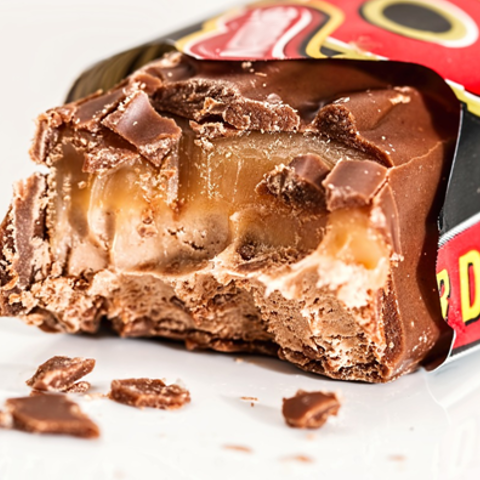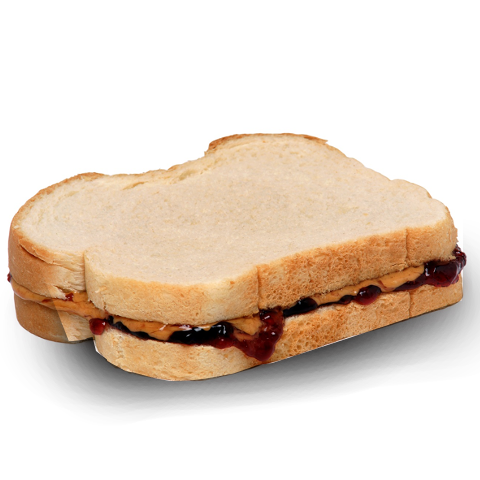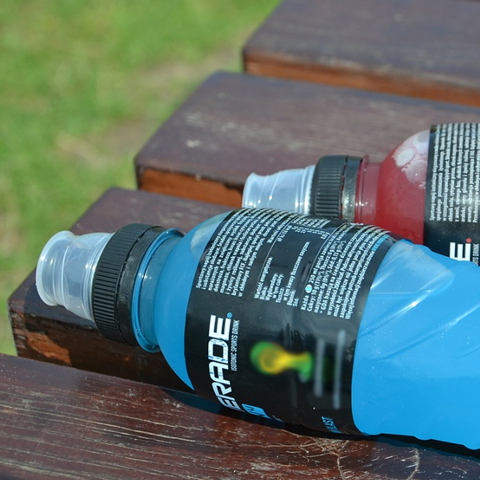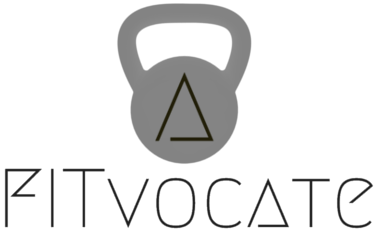
Before I begin this article, I think it is highly important that you know this: Eating junk food won’t make you fat. A caloric surplus makes you fat. You can eat a diet full of: candy, soda, pizza and other delicacies that are considered “bad for you” just as long as you stay within your recommended daily calorie expenditure. If you followed the all junk food diet, you’d experience a multitude of issues all due to the lack of micronutrients, but as long as you stayed within your maintenance calories, you’d maintain your weight. Another issue with this diet is that you’d be “hangry” all the time due to the small amount of food you’d be eating (because junk food is generally calorie dense).
On the flip side, it is possible to get fat on an all fruit and vegetable diet. The main point I’m trying to get through to you is that caloric surplus’ make you fat, not the specific foods you eat.
With all that being said, the reason I’ve put together this list is because I find it kind of scummy that companies try to sell “health food” that is really over glorified (and over marketed) treats. I’ll be making another list in the not so distant future because, sadly, there are many products out there that are “a wolf in sheep’s clothing”. So, for your reading pleasure, I present to you, my:
Top 5 Worst “HEALTH FOODS” pt.1

1. Protein Bars – Over Glorified Candy Bars
There are certain protein bars that I consider a staple, if I’m traveling on a QUEST or something, but there are certain protein bars that are just moderate to high-protein, candy bars. Here’s why certain brands just plain ‘ole stink:
Soy Protein Isolates
Always read the ingredients! If you see “soy protein islolate” or any of the varieties that I’ve mentioned in this article: how to read nutrition labels. Another term you may read is “soy crisps”. Just avoid anything soy related (except soy lecithin or soy oil, it’s damn hard to avoid those two ingredients and it’s been shown not to be too detrimental on your testosterone levels. I would never eat them on purpose, but I’m not going to let those ingredients stop me from eating certain foods...but soy protein will always prevent me from eating it. Companies add this cheap protein to their foods, because it is cheap!
High Sugar Alcohols
In an attempt tokeep their “nutritional bar” low sugar, companies will add sugar alcohols to their food. Sugar alcohols are non-nutritive sweeteners (non-nutritive meaning “legally calorie free” and no nutritional value is added to the food item from this particular ingredient) that allow the food to taste sweet, without all the calories contained within sugar. Let me tell you this: you’re better off eating real sugar than this stuff. You’re body knows what to do with real sugar, as opposed to this chemical.
Ingesting too much sugar alcohols is rough on your digestive tract, according to this article [1]. Here’s a list of the most common sugar alcohols that you should look out for on the ingredients list (they are also listed under the “total carbohydrates” section of your food) as well as the max amount of recommended sugar alcohols daily intake:
▪ Malitol – 60g
▪ Erythritol – 40g
▪ Isomalt – 29g
▪ Lactitol – 25 to 50g
▪ Sorbitol – 23g
▪ Xylitol – 20g
▪ Mannitol – 10 to 20g
Cheap Protein Blends
What I look for in a protein bar is: Whey Protein. Once I’ve discovered that whey protein is the main protein source of the bar I then look to see if it’s Whey Isolate or Whey Concentrate. Whey isolate is much more expensive for the companies to add (hydrolyzed whey protein is often considered better than the isolate variant, but you’ll never see that as an ingredient) to their food, but it is considered by many as the best variant of whey.
If you ever see the word “protein blend” and then it will list in parenthesis the types of proteins involved in the blend; it’s safe to assume that a majority of the protein contained in that bar is coming from the cheaper protein...even if whey protein isolated is listed first.
For example: if you read Whey protein blend (Whey protein isolate, Whey concentrate) it’s safe to assume that the protein is coming from 90% Concentrate and 10% Isolate.
You may also read: Milk Protein concentrate: The cheapest of the dairy variants of protein, and is really only an issue if you’re lactose intolerant.
Conclusion:
Protein bars are great for when you’re on the go and need to get that protein in. Just be on the look out for shady ingredients that companies add to boost their highly marketable numbers that allow them to state: high protein, low sugar. The best way to get protein in? Real, whole foods.

2. Granola & Granola Bars
The word granola might conjure up images of health, but for the most part, a healthy diet could do without it. Here’s why:
Essentially Sugary Cereal
The sad fact is that granola has such high potential to be good for you, but what ends up happening is they load it with sugar and it essentially becomes no better than any cereal you would consider “junk food”.
“High Protein”
Here we go again. If you read high protein on the front of the package, just remember this is a highly marketable word that companies will gladly use to embellish their otherwise crummy product. If you read “high protein” just know that 9 out of 10 times that protein will be the dreaded SOY PROTEIN ISOLATE.
Low Quality Fats
Fats are an essential macronutrient that should take up a large portion of your diet to maintain optimal hormone levels, but there are certain fats that are detrimental...and you know damn well that they are used here. Just be on the look out for:
▪ Hydrogenated Oils
▪ Refined Oils
▪ Non-dairy Creamers (what the heck is that even?)
▪ Margarine
▪ Shortening
▪ Soybean Oil
▪ Cottonseed Oil
▪ Expeller Pressed Canola Oil
▪ High Oleic oils
Conclusion
Granola could be good for you, but the types you buy in the store generally aren’t. In theory, granola should be good for you because they’re: low in sugar (mostly from dried fruits and honey), high in fiber, moderate in protein and fats (coming from the oats,nuts and seeds). With most things in this world, to assure quality, just make your own.

3. Certain Greek Yogurts
“Wuhhhhh??? I thought you said in that TOP 10 Anabolic Foods article that greek yogurt was good for you?” Well, friend, it is. “So why is it here, friend?” Well, friend, it is here because like most foods that are good for you, the food industry has as way of F$%’in it up for you.
In a perfect world, you’d make Greek yogurt by extracting it from hormone free, grass fed cow’s milk and to sweeten you’d add some of the honey you’ve harvested yourself and maybe some of that granola you had made...but nobody has time for that. So here’s what I recommend you avoid, when it comes to buying Greek yogurt.
Excessive Sugar
The sweeter the yogurt the better it tastes. Food companies market on the fact that you already know Greek yogurt is good for you, so in this ever growing competitive market, they figure the best tasting Greek yogurt wins...and they’re right. A rule of thumb that you should follow is that the sugar content should not exceed the protein content. The yogurt shouldn’t say Sugar:20grams Protein:12grams.
If the sugar content is stated as “low”, just keep an eye out for the sugar alcohols I’ve listed above.
Could be considered no different than ice cream.blac
Not Hormone Free
While the FDA says that the addition of the protein hormone Bovine Somatotropin (rBST) is not detrimental to your health in anyway, most people agree that statement may not be entirely true. You can read here [2] everything you want to know about rBST. Since rBST is ingested orally and then fully digested by the cow, this renders it useless. If the compound rBST was injected directly into your blood, it would be useless and have no effect on you, but if you ingested it orally, like the cow, then it would affect your health. Even though the FDA says it’s safe, and it probably is, I’ll still avoid products that have it in it, because there are a lot of products out there that are rBST free.
Dairy cows are given a surplus of the female sex hormone “Estrogen”. Estrogen is the opposite of the male sex hormone “Testosterone”. If you consume a lot of commercially processed dairy milk (nearly 100% chance you are) you are consuming a large amount of exogenous estrogen, according to this study [3]. To prevent over consumption of exogenous estrogen, try to get dairy produced by grass fed, free range cows.
Lack of Active Cultures
Besides protein, the second main benefit of consuming Greek Yogurt on a daily basis is the probiotic concentration. It should say on the label “Contains Active Cultures” if it does, you’re golden. The Greek yogurt you purchase should also say more than one type of active culture: Lactobacillus Acidophilus, Lactobacillus Casei and maybe even a few more. If it doesn’t say anything about active cultures but boasts about protein content, put it back on the shelf and find one that does mention its high active culture content.
Conclusion
As long as your Greek yogurt contains active cultures, and is free of rBST I’d continue to buy it. I eat 500grams of a generic store brand Greek yogurt everyday and I’d say my testosterone levels have not been affected in any negative way by the exogenous estrogen.

4. Peanut Butters – They’re not all the same!
You’ve been told time and time again that peanut butter is a healthy choice...welp, it ain’t! Sure, in moderation peanut butter is fine, but I wouldn’t make it my main fat source. Peanut butter is high in Polyunsaturated Fats (PUFAs) which have been shown to affect the cell walls when eaten in excess – Saturated fats are what your cell walls are made of, so foods like: butter, coconut oils, egg yolks are all great sources of saturated fats.
For the most part, peanut butter is fine to eat, but here’s the type of peanut butters you should avoid:
Reduced Fat
If you purchase a peanut butter that has “reduced fat” on the label, do yourself a favor and stop eating that immediately. Words like “reduced fat” are highly marketable words that are put on labels for one reason: they work and they work well. To reduce fat, they don’t use a fancy low fat peanut variety, they add ingredients in place of the higher fat peanuts: Hydrogenated Oils, Soy Protein Isolates and Concentrates, as well as, various other chemicals. This type of peanut butter is highly processed. Avoid it.
If it doesn’t say “Natural”
Food companies are essentially telling you on the labels “You can buy a simple natural peanut butter, or you can buy a highly processed variant, your choice”. If it doesn’t say “Natural Peanut Butter” on the label, it’s not worth eating. Peanut butter should have less than five total ingredients: Peanuts (duh), Salt (optional), Sugar (optional) and sometimes an oil. To make your own, simply roast peanuts in the oven at 450 degrees Fahrenheit for about 15-30 minutes (or until they’re golden brown) and then put them in a food processor until they’re smooth like the peanut butter you’re used to. Done.
Conclusion
To be honest, I rarely eat peanut butter – but also to be honest, there’s nothing I love more than a freakin’ loaded peanut butter sandwich with honey, bananas or blackberry jam, with maybe some toasted bread so that the peanut butter gets slightly running...holy moly, I’ll be right back, I need to make a sandwich. Eating it every once in a while is really not an issue, just don’t make it your main source of dietary fat and make sure it says “natural”. If you have the common peanut allergy: almond and cashew variants are available in most markets these days.

5. Sports Drinks
Sports drinks are designed for dehydrated athletes, not thirsty couch potatoes. Sports drinks are really more considered a tool and, for lack of better terms, a performance enhancing substance. Here’s the issues I see with sports drinks:
Not for Daily Sippin’
Sports drinks were designed to replenish the body with what is lost through sweating. In theory, it’s a great product, but a majority of the drinkers of sports drinks are drinking it when not necessary – example: with meals, while on the couch, maybe while on the road or even at the gym (but not really pushing yourself hard enough to deplete the body of glycogen and electrolytes).
Zero Calories
If you’re a hard working athlete who is competing to the extent of your abilities and need replenishing during the game: Why on Earth would you want to ingest something with 0 calories? Calories are simply a unit of measuring the energy contained within a food source. 0 calories = 0 energy. Pour me a cup, coach? Nope, this drink was purely intended for the dehydrated couch potato. Could be a good choice, since you don’t need many calories to maintain that healthy lifestyle...the main issue is that it’s loaded with: sodium and sugar alcohols. Sodium is a key electrolyte required for proper muscle function - but there comes a point when too high of a concentration in the blood is not that good for you. Sugar alcohols (as I stated earlier) can be taxing on your digestive tract and cause gastrointestinal irritation, if too much is ingested daily. Drinking a 0 calorie sports drink (or nearly all “diet drinks”) is a fast tract way to punch yourself in the gut, internally.
Conclusion
Don’t drink sports drinks, unless you’re doing sports. Don’t drink sports drinks with 0 calories whether or not you’re doing sports.
Final Conclusion
Health foods that are labeled as “health foods” generally aren’t healthy. You know what is? REAL FOOD. Whole food ingredients. You know what is an example of a healthy meal? Chicken, broccoli and sweet potatoes. How many ingredients is in that whole entire meal? 3. Only three ingredient were needed to make that meal. Do you know what can make you fat? Eating too much chicken, broccoli and sweet potatoes. Huh? Remember - weight control is always about calories in vs calories out. That being said; it’s pretty hard to get fat off of those types of food, because they’re so voluminous. The only healthy food is the food needed to help you live the life you want to live without feeling crummy...but feeling healthy. Whatever path you choose, just remember:
Food is Life. We are advocates of your goals!
-Chris
[1] http://www.sweetenerbook.com/blogs/Polyols-Digestion.pdf
[2] https://ansci.cals.cornell.edu/sites/ansci.cals.cornell.edu/files/shared/documents/Recombinant%20Bovine%20Somatotropin_v3.pdf
[3] http://neptronix.org/wordpress/wp-content/uploads/estrogen-millk-Maruyama_2010_PI_52_33.pdf
- Diet
- Food For Thought
- Getting Started
- Supplements

